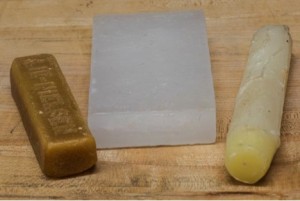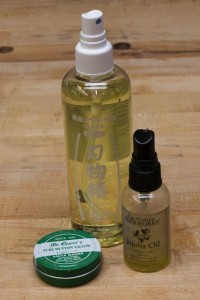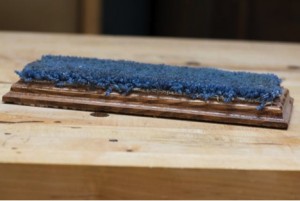Hand planes work best when they can glide easily across the surface of the wood. Lubricating the plane’s sole can make a dramatic difference in the amount of effort expended in planing. There are several ways to do this. You can make X marks or scribbles on the sole with paraffin, beeswax or candle wax.
Or you can use imported camellia oil, jojoba oil—a domestic product—or mutton tallow.
If you do a lot of planing, you may find it convenient to make a plane oiler. Prepare a board or piece of MDF of about 4″ X 12” and attach a piece of carpet remnant with contact cement. Also glue a piece of non-skid material such as drawer liner to the bottom to hold the oiler in place during use. While the cement is drying, clamp the oiler in a vise or between a pair of boards; the pressure will help the cement to adhere firmly.
To use the oiler, spray the carpet lightly with camellia oil or jojoba oil. Then, draw the plane across the oiler, backwards so the blade does not catch the fabric. This will put a light coat of oil on the plane’s sole. The plane should only need to be lubricated every couple of boards, or whenever resistance against the wood begins to build. The oil will not affect the finish you apply to your project.
The author is a woodworker, writer, and woodworking instructor living in the Blue Ridge Mountains with his wife, a woodshop full of power and hand tools and four cats who think they are cabinetmaker’s assistants. He is the author of the forthcoming book Choosing and Using Handplanes. He can be contacted at nreid@fcc.net.




